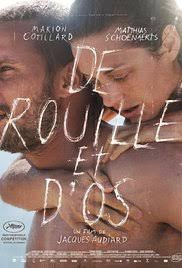
The Imposter stands out in style compared to other documentaries I have looked at. Using stylistic features to tell the story of the missing; Nicholas Barclay. Using sit down interviews and stylised reconstructions, we are shown all sides to the story.
Initially, Barton portrays the missing boys family as innocent by subtly revealing their side of the investigation. The audience feels sympathy due to the telling of how Nicholas went missing and how Frederic Bourdin began to spiral into taking the identity of the missing child. By Frederic explaining how he pretended to be child and eventually stealing the identity of a missing child, Barton shows us just one element of an extremely complicated plot. Barton lays the plot out in a specific way in order to add more questions for the audience. By the end of the documentary, we are left questioning the integrity of the family rather than the man that has been stealing the identity of children for years.
Similar to The Act Of Killing, The Imposter includes the main people in the events retelling the story. Despite this, the two documentaries differ. Oppenheimer's The Act Of Killing includes different ways in which the main people retell a story, for example: Anwar and his colleagues making a film to create a reenactment of the mass killings, visiting old sites to recount memories and sitting down to talk about the past. On the other hand, Barton uses the very personal method of a sit down interview to give the audience detail on what happened. With this method we can see their body language and facial expression which can be another way to gain perspective rather than just speaking.
Initially, Barton portrays the missing boys family as innocent by subtly revealing their side of the investigation. The audience feels sympathy due to the telling of how Nicholas went missing and how Frederic Bourdin began to spiral into taking the identity of the missing child. By Frederic explaining how he pretended to be child and eventually stealing the identity of a missing child, Barton shows us just one element of an extremely complicated plot. Barton lays the plot out in a specific way in order to add more questions for the audience. By the end of the documentary, we are left questioning the integrity of the family rather than the man that has been stealing the identity of children for years.
Similar to The Act Of Killing, The Imposter includes the main people in the events retelling the story. Despite this, the two documentaries differ. Oppenheimer's The Act Of Killing includes different ways in which the main people retell a story, for example: Anwar and his colleagues making a film to create a reenactment of the mass killings, visiting old sites to recount memories and sitting down to talk about the past. On the other hand, Barton uses the very personal method of a sit down interview to give the audience detail on what happened. With this method we can see their body language and facial expression which can be another way to gain perspective rather than just speaking.





